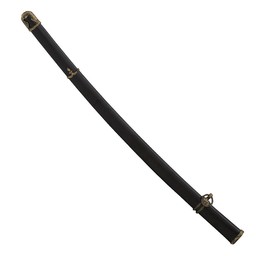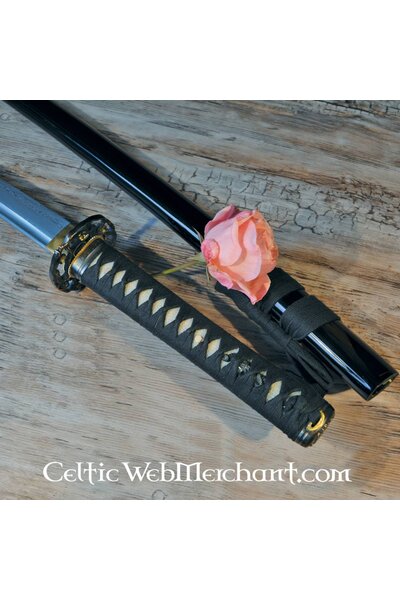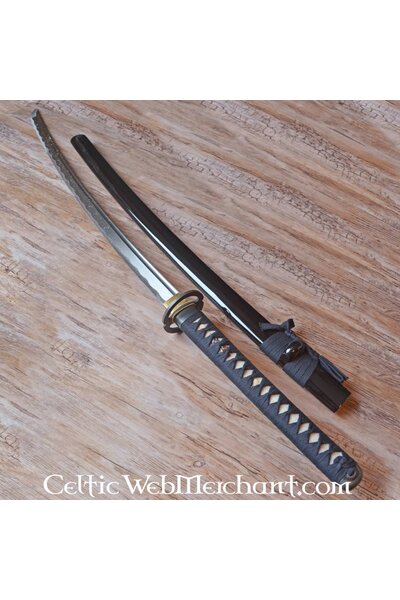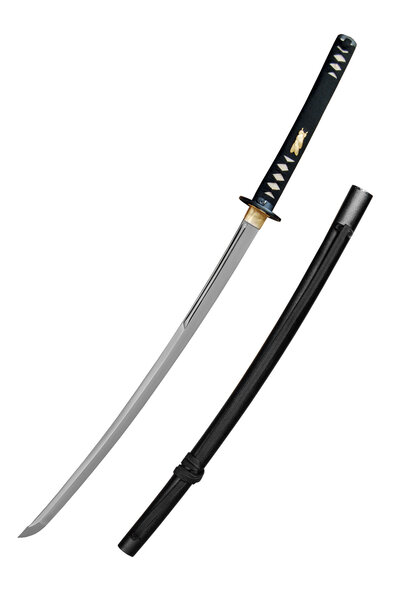Product description
This katana is a replica of the type that was made around the end of the 19th century. A theory is that the somewhat larger curve in the blade is derived from the curve in the French cavalry sabres. But this can not be corroborated. This type of katana was worn and used at the World War II front by high officers or officers from traditional rich Japanese families. Katanas that are worn by the 'simple' soldier were usually industrial mass productions, while katanas of higher officers could remain in the family for hundreds of years.
This very detailled katana has a 1095 carbon steel razor sharp blade. The blade is made in the Shinogi-Zukuri style. The edge has a hardness of approx. 60 HRC and the back is 50 HRC.
The grip is wrapped round with shagreen and covered with rough woven cotton in the Hineri-Maki style. The brass tsuba is an exact replica from originals.
This katana is delivered including wooden scabbard. The scabbard is decorated with brass beatings in the style of the tsuba. This sword is 102,5 cm long with a 72 cm blade and weighs 1150 grams.
Product details:
Blade Material: 1095;
Handle Material: Wood / ray skin / Cotton;
Sheath: Wood;
Handle Length: 29,5 cm;
Blade Length: 72,5 cm;
Overall Length (without sheath): 103 cm;
Weight (without sheath): 1150 g
This item is produced in limited quantities only. This means that every piece is unique. Sizes & finish may vary lightly from piece to piece.
We do not sell this product to customers under the age of 18. Click here for more information on the European arms acts.
We ask for a one-off age verification when purchasing sharp objects
Click here for more information.
The parcel of this item will be labelled: “Warning, sharp content. Please only deliver to adults (18+).”
Packaged with 100% recycled material
When packaging this item, we exclusively use 100% recycled plastic and recycled paper/cardboard from FSC certified forests. We reuse a large part of the material directly without the intervention of a recycling process.
Recycle the material by separating your waste:
1. Cardboard: separate or reuse your paper.
2. Plastic cushions, clothing bags and plastic tape: separate or reuse your plastic. If possible, pierce the cushions with a volume reduction needle.
3. Paper packaging for jewelry and small items: these have a plastic inner layer. Remove these, then separate your paper and plastic.













